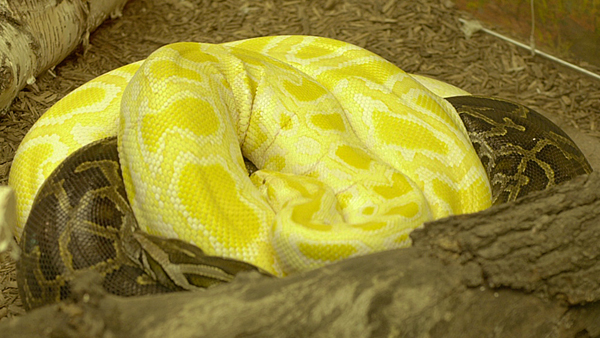Do You Attribute the Incredibly Complex Workings of the Eye to Evolution or Creation?
This question is one of the most intriguing, and perhaps most important, questions I have received amongst the thousands that have been submitted by students to this project and others. For me, there is no question that the preponderance of the scientific evidence points to evolution as the source of our species and our visual system. I say that with full sensitivity that some religious traditions teach, and believe, otherwise. That is their right and privilege, but it is not science. Science and religion should not be confused and they both have a place in society and education. This website is about science.
Scientists use a well-established and self-regulated procedure to observe the natural world and attempt to figure out how it works for a variety of reasons (e.g., developing technology to help our lives). The process involves first making careful observations of the world and its behavior. The scientist then makes a hypothesis about how the observed phenomena might work. Then careful experiments are designed and performed to test the hypothesis through more careful observations and objective measurements. This process is then iterated upon to refine the original hypothesis and perform more tests. Once consistent, and repeatable, results are obtained, scientists then form a theory that might gain support through consensus of the scientific community. Theories are continually tested and expanded upon through the scientific process and almost all are subject to improvement. Occasionally theories are so well established and agreed upon that they are called scientific laws (like the law of conservation of energy).
Every step in the scientific process has uncertainty associated with it and good scientists do not hesitate to report the degree of uncertainty. Unfortunately, some with political or business agendas (and apparently no understanding of science or nature) see these statements of uncertainty and use them for their personal gain. This has led to baseless attacks on science in recent times. For example there are some who claim that there has been no warming of the climate in recent decades even though the data are unequivocal. They then take small uncertainties in the results and say that those minute possibilities prove there is no climate change and that, even if there was, it is not caused by human impact on the environment. Well, they are correct about only one point; there is uncertainty. However the uncertainty is so tiny, and the scientific consensus so strong (yes, science does actually work by consensus), that I have no doubt that both the climate is warming and it is due to human activities (and I have personally examined both the data and theories to strengthen my conclusions). I encourage everyone to study for themselves, look at original results and analysis, and draw your own conclusions. Simultaneously investigate the motivations (and funding sources) of those writing what you read, including this site.
Unfortunately, the same sort of attacks have happened in the field of evolution science. There is little scientific doubt that evolution (both micro and macro) has taken place on earth and these conclusions are backed by countless theories and observations. People who believe otherwise have attempted to corrupt science by creating completely unscientific ideas like creation science and trying to force schools to teach it as an equal to the science of evolution. Creation is a religious belief and should rightfully be taught in religion classes. Evolution theory is a scientific fact, and rightfully belongs in science classes unless, and until, new science supplants it. All that said, yes, there is very clear evidence that our human vision system has evolved. And it is likely that it has evolved to help us identify healthy mates, good food, and potential danger; all key elements of survival and the natural selection that helps drive evolution.
![]()
Explore the NEXT TOPIC at this level.
There are no more levels to explore! Congratulations for reaching the top. If you are interested in more, these discussions of EYES fall under the scientific disciplines of visual ANATOMY and PHYSIOLOGY.
Ever wonder ... If no light falls on an object does it still have a color?
Updated: Apr. 19, 2011

